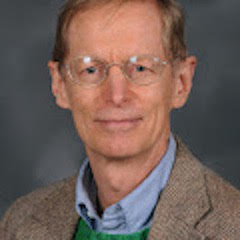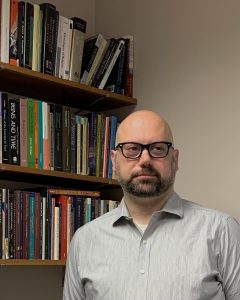 For six years of available academic time, Jeffrey Wattles nourished his soul in the study of Chinese philosophy, specializing in Confucianism. He interacted with leading specialists in North America and also at the University of Beijing, where he lectured on the Confucian golden rule and the philosophy of living in truth, beauty, and goodness. Chinese tradition remains deeply embedded in his thought. We invited him to discuss comparative philosophy of religion as part of our “Philosophers of Religion on Philosophy of Religion” series.
For six years of available academic time, Jeffrey Wattles nourished his soul in the study of Chinese philosophy, specializing in Confucianism. He interacted with leading specialists in North America and also at the University of Beijing, where he lectured on the Confucian golden rule and the philosophy of living in truth, beauty, and goodness. Chinese tradition remains deeply embedded in his thought. We invited him to discuss comparative philosophy of religion as part of our “Philosophers of Religion on Philosophy of Religion” series.
In one form or another, the golden rule—“Do to others what you want others to do to you”—enters into both comparative philosophy and comparative religion. The life in the rule may be observed in its different levels of meaning. In Confucianism, the first level is conscientious conformity to social rules; the highest level is spontaneously following what Confucius called “the Decree of Heaven” (Analects 2:4).1
Confucianism often speaks of comparing self and other to express what it means to relate in the spirit of the golden rule.2
1. In this heritage, the core meaning is stated by Chu Hsi (1130-1200 C.E.). “By ‘comparison’ I mean to compare the mind of another with my own, and so put myself in their place.”3
2. We have an imperfect, but nevertheless intuitive, empathic understanding of one another. In The Great Learning we read: “The ‘Announcement of K’ang’ says, ‘Act as if you were watching over an infant.’ If a mother sincerely and earnestly looks for what the infant wants, she may not hit the mark but she will not be far from it. A young woman has never had to learn about nursing a baby before she marries.”4 Comparing involves heart-and-mind (one word in Chinese).
For Olivier du Roy, in several ways the greatest historian of the golden rule, the first level of the rule is empathy, which engages the depth of human feeling.5
3. We attribute aspects of our own humanity to the other, and act in the light of what we have reason to think are shared desiderata.
A man of co-humanity [benevolence, love], wishing to establish his own character, also establishes the character of others, and wishing to be prominent himself, also helps others to be prominent. To be able to judge others by what is near to ourselves may be called the method of [attaining] co-humanity. (Analects 6.28, Chan 31)6
Du Roy repeatedly cautions against projecting our likes and dislikes onto others.
4. The agent discerns patterns of relationships, for example, the asymmetrical pattern of parent- and-child and the symmetrical pattern of friend-and-friend. In a given situation, recognizing the norms implicit in the type of relationship at hand enables golden rule conduct to be guided by ethical concerns.
Du Roy’s second level of the golden rule involves a universal principle, valid for all in the same situation, as in Kant’s second formulation of the categorical imperative and better expressed by 4th century preacher John Chrysostom (du Roy, volume 1, 236).
5. Great persons acquire respectful and loving attitudes to those close to them, and then extend these attitudes to remote others (Mencius 1A7).
Du Roy says that we learn the practice of the golden rule with those close to us (literally “neighbors”) but the real challenge comes with those whom we cannot spontaneously love, perhaps because they are remote, encountered in the context of an institution, or enemies. He emphasizes that the golden rule in Luke 6:27-36 comes in the middle of a lesson on the love of enemies. The natural human tendency—to expect or hope for reciprocal beneficial treatment from others—falls short of the true criterion.
7. As we grow, we see others as siblings. For Confucius’ sage, “All within the Four Seas are his brothers” (Analects 12.5, Lau). Chang Tsai (1020 1077): “Heaven is my father and Earth is my mother . . . . All people are my brothers and sisters . . . .” (Chan, 103, sec 20). For Wang Yang-ming (1472-1529), “The sage . . . regards all the people of the world as his brothers and children . . . .”7
8. Mencius. The highest level of the golden rule is spiritual, spontaneously transcending rule-following.
A noble man steeps himself in the Way (tao) because he wishes to find it in himself. When he finds it in himself, he will be at ease in it; when he is at ease in it, he can draw deeply upon it; when he can draw deeply upon it, he finds its source wherever he turns. (Mencius, 4B14, D.C. Lau, tr.)
Mencius’ expression of his spiritual path invites those who would understand him to do the same.
At Kent State University, in my world religions classes, and philosophy classes, most of which included comparative philosophy segments, I centered learning on experiential projects (I would do one with them). I would select what I thought was a widely appealing and worthy teaching in what we were studying. Then I would invite the students to transplant it into the garden of what they believed and how they thought and expressed themselves—and apply it in their lives, ideally to their “front-burner issue” (if it was psychologically reasonable for them to do so and something that they felt comfortable sharing at least with me). They wrote experience reports, a majority of which narrated difficult challenges and profound transformations. Finally, they created a commentary on these reports from the perspective of the text or tradition we were studying. Thus the act of transplanting into one’s own garden stays in dialogue with the otherness of the text.
Finally, here’s my most recent experience report of a new frontier for growth as a follower of Jesus, also inspired by Mencius and taught by du Roy. I call it “living in the plural.” This means (1) living with the indwelling spirit of God (transplanting Mencius) and (2) living with the universal family of God, including each person I relate with and each group I may be present with, e.g., other drivers on the road, or those anywhere who are in the same situation that I’m in.
NOTES
1. Confucius, The Analects, tr. D.C. Lau (Harmondsworth, UK: Penguin Books, 1979), 63.
2. This discussion is based on Jeffrey Wattles, The Golden Rule (Oxford University Press, 1996), 19-23.
3. Chu Hsi, The Philosophy of Human Nature, tr. J. Percy Bruce (New York, AMS Press, 1973), 435.
4. Translated by Wing-tsit Chan, A Sourcebook in Chinese Philosophy (Princeton, New Jersey: Princeton University Press), 91.
5. Olivier du Roy, La règle d’or: Histoire d’une maxime morale universelle (Paris: Les Editions du Cerf, 2012).
6. 6:30 in Lau. David Nivison renders the last sentence thus: “The ability to make a comparison (namely, with the other person) from what is near at hand (namely, from your own case) can be called the method of (attaining) benevolence.”
7. Wang Yang-ming, Instructions for Practical Living and Other Neo-Confucian Writings, translated by Wing-tsit Chan (Princeton: Princeton University Press, 1963), Part I, section 142, page 118.

